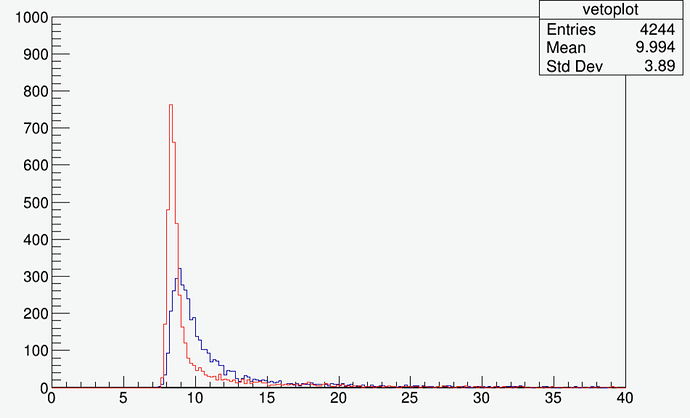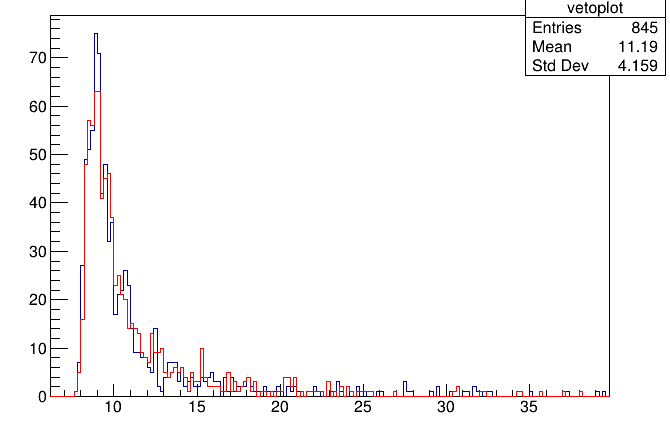Dear colleagues,
somehow following up on the question that was discussed here, I am now seeing an unexpected (for me) effect related to energy scoring along a particle step when quenching is activated by means of the USERDUMP card, SDUM=UDQUENCH.
Specifically, in my setup I am scoring energy deposition by muons passing through a 4-cm thick plastic scintillator, with first Birks parameter set to 0.013. I do so via mgdraw.f
If I set the weight of the primary muon to one (via a custom source.f code), I see a proper energy deposition spectrum, that is almost the same as that I obtain if I de-activate the quenching mechanism (as expected).
However, If I set the weight of the primary to 1E-3, I see the following:
- If quenching is not activated, the energy spectrum looks as the one with primary weight set to 1.
- If quenching is activated, instead, all events have a very small energy deposition.
Is there a correlation between the deposited energy (with quenching) and the weight of the particle?
The code I am using in mgdraw.f to handle quenching is:
* +-------------------------------------------------------------------*
* | Quenching is activated
IF ( LQEMGD ) THEN
IF ( MTRACK .GT. 0 ) THEN
RULLL = ZERZER
CALL QUENMG ( ICODE, MREG, RULLL, DTQUEN )
END IF
END IF
* | End of quenching
* +-------------------------------------------------------------------*
CALL digicontinuos(JTRACK,ETRACK,MTRACK,DTRACK,DTQUEN,
& XTRACK,YTRACK,ZTRACK,MREG,LT1TRK,LT2TRK,MNAME)
end if
digicontinuos is the function I use to score at the event level the energy deposition. As I reported before, in case the primary weight of the particle is set to one, everything works as expected.
Thanks,
Andrea

